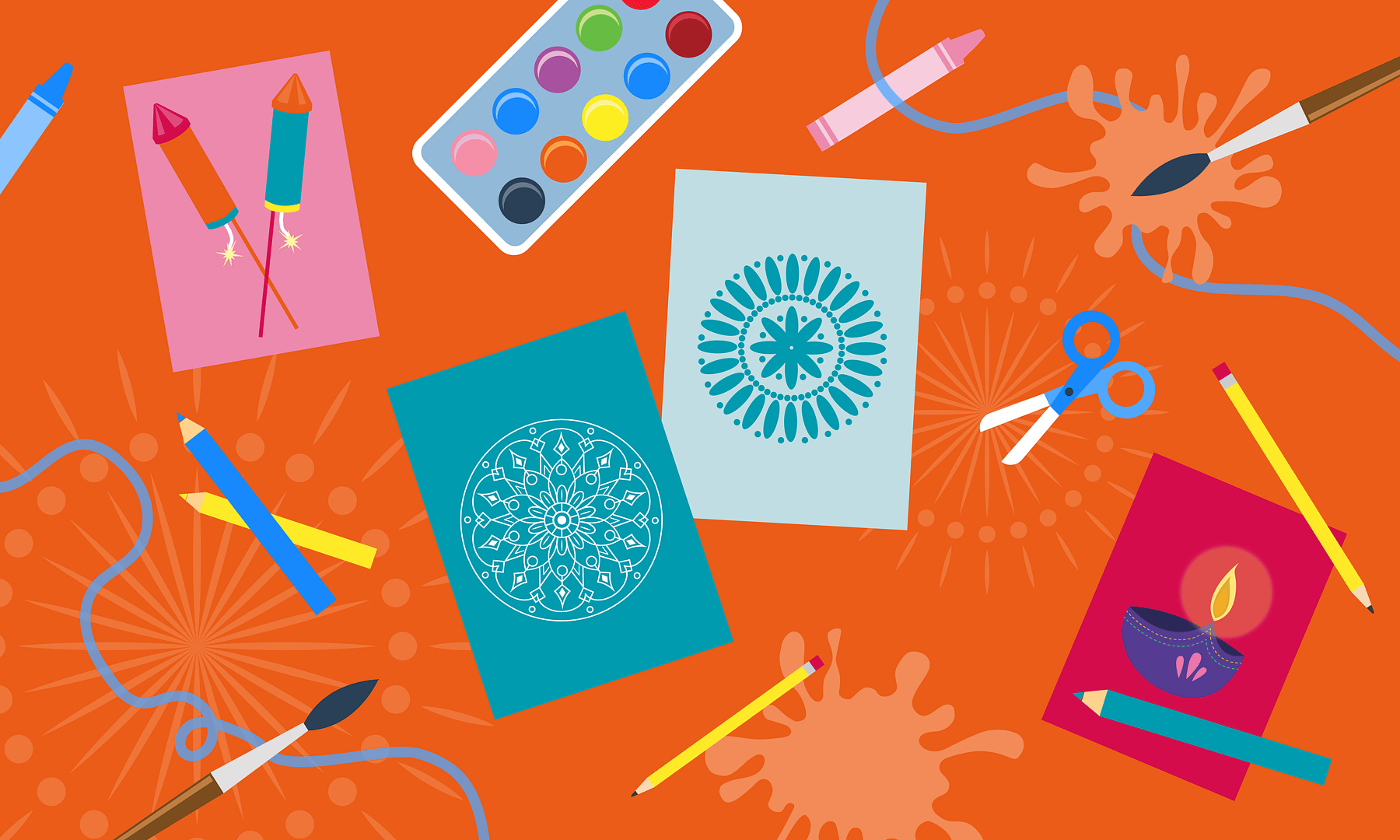Light up your classroom at Diwali: Art and craft ideas for primary schools
Written by Kapow Primary's Art and Design Team
Published on 11th October 2024
Last Updated: 11th October 2024
Written by Kapow Primary's Art and Design Team
Published on 11th October 2024
Last Updated: 11th October 2024

Diwali, a vibrant celebration of light, colour, and culture, is perfect for creative classroom art projects. From abstract designs to rangoli patterns, pupils can explore the festival’s deeper symbolism. This blog offers Diwali-themed art ideas, suitable for various key stages, which have been inspired by artists and traditional crafts.
Age group: Key stage 2
Linked artist: Sayed Haider Raza
Artist background: Sayed Haider (S.H.) Raza is an Indian painter known for his abstract art, using geometric shapes and bright colours to explore themes of Indian culture, including Diwali.
Learning objective: Use abstract shapes and colours to create art inspired by S.H. Raza’s geometric style, exploring the symbolism of light in Diwali.
Activity:
Age group: Any key stage
Linked artist: Bharti Dayal
Artist background: Bharti Dayal is an artist known for her contemporary renditions of rangoli art, which combine traditional patterns with modern materials.
Learning objective: Use your understanding of rangoli patterns to create a design inspired by Bharti Dayal. Focus on symmetry, and use colours that symbolise Diwali.
Activity:
Age group: Any key stage
Linked artists: Seema Kohli and Siona Benjamin
Artist backgrounds: Seema Kohli is a contemporary Indian artist known for her colourful, detailed works inspired by Indian mythology, spirituality, and festivals such as Diwali. Her art often features swirling patterns, nature, and traditional symbols, making it a perfect inspiration for intricate designs.
Siona Benjamin is an Indian-American artist who mixes Indian cultural motifs with contemporary themes. She often uses rich colours, Hindu iconography, and spiritual symbolism. Her use of Diwali-related symbols can inspire children to incorporate traditional imagery with bold colours in their card designs.
Inspiration: During Diwali, families often exchange greeting cards to share good wishes and blessings. Children can design and make their own personalised Diwali cards.
Activity:
Extension idea: Incorporate printmaking techniques by making stamps for diyas, fireworks or other symbols and using these on the cards.
These simple ideas are not focused on any particular artist and can be adapted for any primary-age pupils.
Focus: 3D design, cutting, and folding
Inspiration: Families often hang bright paper lanterns, or ‘kandils’, outside their homes during Diwali to decorate and light up the streets.
Activity:
Focus: 3D art, modelling, and sculpting (This KS1 Lesson could be adapted for this clay project or for Diya making as it covers the basic moulding skills required)
Activity:
Extension idea: Use glitter or metallic paint to give the sculptures a festive finish.
Focus: Textile arts and cultural decoration
Inspiration: A toran is a traditional decorative wall hanging made from fabric, beads, and bright colours often seen during Diwali.
Activity:
Extension idea: Children can work in groups to create a large toran for the classroom entrance, similar to how families hang them on their doors for Diwali. This will also work as a paper craft!
These Diwali art activities offer a wonderful way for children to immerse themselves in the festival’s rich traditions and vibrant symbols. Whether through abstract painting, rangoli designs, or crafting decorative lanterns, each activity helps pupils understand the cultural significance of Diwali while developing their artistic skills. By incorporating these ideas into your classroom, you’ll inspire creativity and cultural appreciation during this festive season.